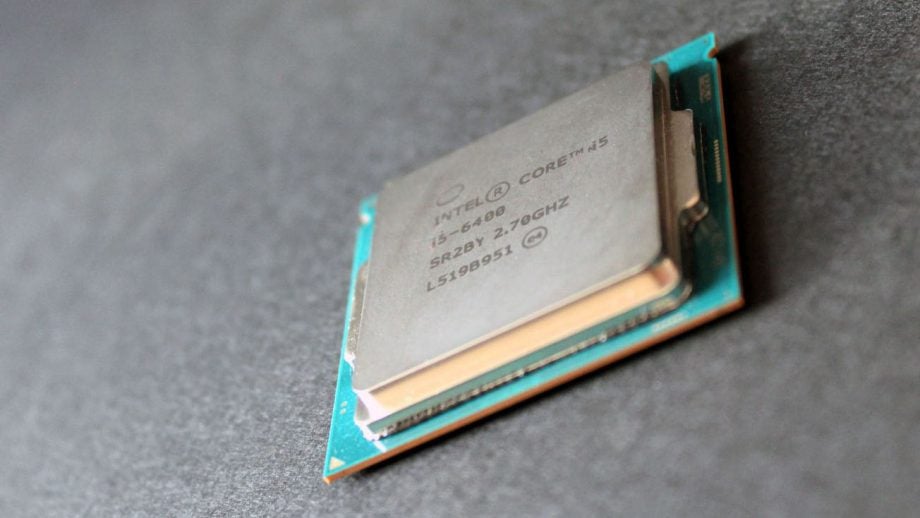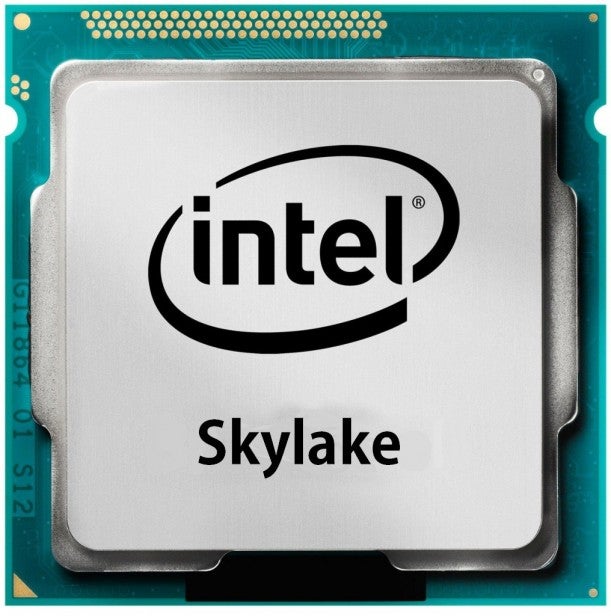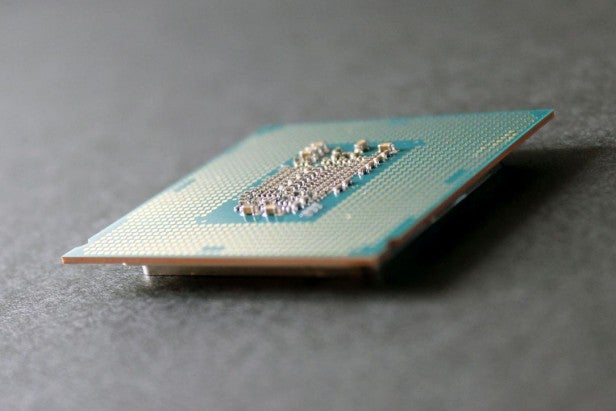Intel Core i5-6400 Review - Performance and Verdict Review
Performance and Verdict
Is this a more affordable route to a mid-range rig?

Sections
- Page 1 Intel Core i5-6400 Review
- Page 2 Benchmarks Review
- Page 3 Performance and Verdict Review
Intel Core i5-6400 – Performance Analysis
The i5-6400 is an interesting prospect. It’s got four cores, which means it matches its stablemate and offers twice the number of threads as Core i3 parts, but its clock speed is low when compared to almost every rival.
That situation meant that a pattern emerged in many benchmarks, with poorer single-core results perked up by better multi-core performance.
In Cinebench R15 single-core test the i5-6400’s result of 142 looks poor: it’s behind a Core i3 Skylake chip that’s got a higher-clock speed, and it’s also slower than everything else I’ve tested aside from a Core i3 part that’s two generations old.
Business picked up in Cinebench’s multi-core test. Here the i5-6400 scored 524, which is easily able to beat the 402 scored by the i5-6100 – no surprise given the Core i3 chip only has two cores. The i5-6400 was still behind other Core i5 and Core i7 parts in the multi-core test, but that’s what I expect given those parts have higher prices and better speeds.
The i5-6400 traded blows with the AMD FX-8350. Take these benchmarks with a grain of salt, as I haven’t been able to test the FX-8350, but the FX generally scores around 100 in the single-core test and about 700 in the multi-core benchmark. AMD’s chip looks far better for multi-threaded tasks, then, but suffers with single-core pace.

The influence of four cores inside the i5-6400 was felt in the Geekbench test, which also measures single- and multi-core performance. The Core i5’s single-core score of 3,738 fell behind the Core i3, but it fought back with a result of 11,303 in the multi-core test – around 2,500 points better than the other Skylake part. There’s very little to choose between the i5-6400 and AMD’s part in the multi-core Geekbench test, but Intel wins convincingly in single-core, where the AMD part generally scores just over 2,000 points.
The Handbrake video encoding test also showed the benefits of multi-core CPUs. The Core i5 rattled through the test in five minutes and 54 seconds – almost a minute ahead of the Core i3 part.
Those multi-core scores are good, but the i5-6400’s lack of single-core speed was apparent elsewhere. In the Dolphin Emulator benchmark it was slower than every other Core i7 and Core i5 part I’ve tested and only managed to beat the two-generation-old Core i3 part. In the browser-based Kraken benchmark, it performed similarly.
The two-tiered Wprime test, the final CPU benchmark, served up mixed results. In the easier 32M benchmark there was little difference between the Core i5 chip and the Core i3 part – but in the more demanding 1,024M test i5-6400 was far faster.
The i5-6400’s lack of single-core speed punished its performance in games. The integrated GPU’s Battlefield 4 average of 16.8fps was a couple of frames behind the Core i3 Skylake chip, and it was a few more frames behind faster Core i5 and Core i7 silicon.
That pattern repeated when I tested the HD Graphics 530 chip in Bioshock Infinite. The i5-6400 scored 17.49fps, but the Core i3-6100 topped out at 19.29fps. That’s not as good as Core i7 and newer Core i5 parts, but it’s still enough to beat older Core i5 silicon.
The Core i5’s performance with discrete GPUs was more mixed. In Battlefield 4 at Ultra settings the i5-6400 averaged 76.5fps, which is the same as the i3-6100 and even a little quicker than most older parts. In Bioshock the i5’s average of 153.1fps was a few frames behind the Core i3 part and in between older Core i5 chips.
It’s a mixed bill of health in discrete GPU tests, then, but it’s clear that the Core i5-6400 is powerful enough to avoid bottlenecking any games.
I have no concerns about the i5-6400’s heat output. Intel’s Skylake architecture concentrates on efficiency, and this low-end Core i5 part will produce even less heat than the modestly warm i5-6600K I’ve already tested. That means Intel’s stock cooler can be used without concern – it’s only worth upgrading in order to reduce noise.
I’ve no concerns about the i5-6400’s power consumption, either. When idling the test rig drew 48W from the mains, and that rose to a frugal 91W when a CPU stress-test was run. That’s far lower than other chips – the i5-6600K required far more than 100W.
Those figures stack up well when compared to AMD, too. The FX-8350 consumes far more power than Intel’s chips when idling and stress-tested.

Should I Buy the Core i5-6400?
The Core i5-6400 clearly lacks for single-core performance, suggesting that those primarily looking for the cheapest way to get the best gaming and single-application performance right now will be better off with a Core i3 dual-core chip (with Hyper-threading) that runs at a higher clock speed. Something like the Core i3-6100 performs faster in these scenarios and is only £98.99.
This also means the i3-6100 makes more sense as an entry-level option from which you can then upgrade at a later date if you find you do need more power. The £149.99 Core-6400, on the other hand, is only another £50 away from the far faster and more versatile 6600K.
If, however, you regularly do heavy multi-tasking or more intensive work such as video/music editing then the multi-core performance of the Core i5-6400 will be the way to go, especially if you’re not as interested in overclocking. Plus it’s still entirely adequate when it comes to single-core performance.
Verdict
The Core i5-6400 is the cheapest way to get true four-core Skylake performance but that comes at the expensive of single-core performance. As such many buyers may be better off with a cheaper, faster-clocked, dual-core chip with hyper-threading. If you do need true multi-core performance, though, then the 6400 comfortably delivers and does so at a reasonable price.


